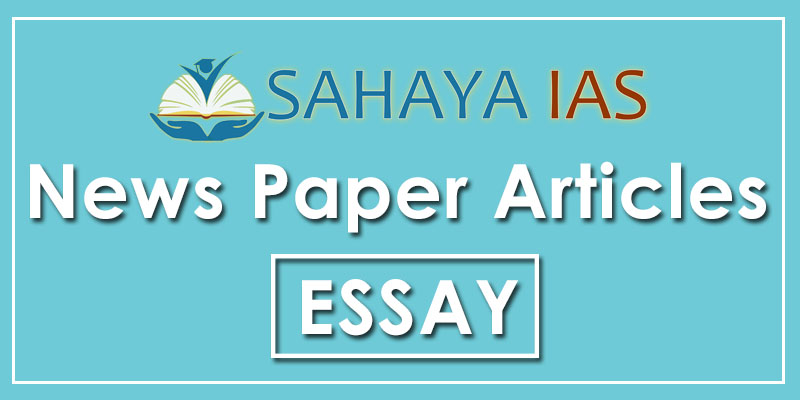Searching for an elusive peace-India must remain engaged with the multiple processes underway on Afghan reconciliation
Why in News?
Recently Russia led Afghan future development change the Game plan in Heart of Asia.
- Russia hosted a regional conference on Afghanistan to nudge the reconciliation process between the Taliban and the Afghan authorities.
- The Taliban were represented by the political council chief, Sher Mohammad Stanikzai.
- Representatives from Afghanistan, China, Pakistan, Iran, Kyrgyzstan, Tajikistan, Uzbekistan, Kazakhstan, Turkmenistan, the U.S. and India were also present at the meeting, making it the first time that all stakeholders were present in the same room.
Back in the game
- Considerable political manoeuvring preceded the meeting. The Taliban were opposed to attending since the Afghan government insisted on co-chairing the meeting.
- The diplomatic solution was to have Afghanistan represented by the High Peace Council (HPC), set up and supported by the government with the specific aim of furthering peace talks, though formally not part of government.
- India sent two seasoned former diplomats, with the Ministry of External Affairs describing its participation as “non-official”.
- The U.S. was represented by its Moscow embassy officials.
- Aware of the differences, the Russians refrained from attempting a final statement or even a group photograph. Nevertheless, with this meeting, Russia has sent a clear signal that it is back in the game in Afghanistan.
- The idea of reconciliation with the Taliban has been around for over a decade. After being elected in 2008, President Barack Obama ordered a full-scale review of the U.S.’s Afghanistan policy.
- Operation Enduring Freedom formally ended in December 2014, handing over primary responsibility for combat operations to the Afghan security forces even as the insurgency gained ground.
- The U.S. soon realised that it had run out of options. Insurgency could not be contained as long as sanctuaries existed in Pakistan and the carrot and stick policy with Pakistan had cost the U.S. $33 billion but failed to change Pakistan’s policy. War weariness demanded an exit and a political solution was unavoidable.
Taliban’s growing visibility in Timeline
- After prolonged negotiations, a Taliban office opened in Doha in June 2013 to promote talks and a peace process. However, when the office started flying the Taliban flag, calling itself the political bureau of the Islamic Emirate of Afghanistan, it angered both the U.S. and Afghan governments.
- The office was closed down though the Qatar authorities continue to host Taliban leaders.An internal power struggle within the Taliban erupted with Mullah Akhtar Mansour emerging as the Taliban leader.
- Insurgency grew with the Taliban briefly taking over Kunduz and Ghormach districts and threatening Ghazni. Today more than 50% of land is under direct control of Afghanistan.
- Afghan President Ashraf Ghani felt betrayed and lashed out, accusing Pakistan of “waging war”.
- A new initiative (Quadrilateral Coordination Group) involving the U.S., China, Pakistan and Afghanistan was launched in January 2016.
- After a couple of meetings, there was a roadmap; Pakistan was to use its influence to get the Taliban to the negotiating table.
- Hopes were dashed when the Taliban demanded exit of foreign troops, release of detainees from Guantanamo, and removal of its leaders from international blacklists.
- Meanwhile, there were signs that the Islamic Movement of Uzbekistan and the Tehrik-i-Taliban Pakistan were converging under the banner of the Islamic State (IS) in Afghanistan’s northern and eastern provinces.
- In December 2015, Russia publicly acknowledged that it had “communication channels with the Taliban for exchange of information” and “a shared interest with the Taliban to counter the threat posed by the IS”.
Remaining engaged
- Mr. Ghani launched the Kabul Process for Peace and Security Cooperation, and made an unconditional dialogue offer to the Taliban.
- The Taliban rejected his overture, declaring that they were ready to engage in direct talks only with the Americans.
- The U.S. softened its stand on an “Afghan-led and Afghan owned peace process”, and senior State Department official Alice Wells was in Doha for a meeting with the Taliban.
- In September, the State Department announced the appointment of Zalmay Khalilzad (former U.S. Ambassador to Afghanistan) as Special Representative for Afghanistan Reconciliation. Mr. Khalilzad, a pushy go-getter, has since been making the rounds in Qatar, Saudi Arabia, the U.A.E., Pakistan and Afghanistan.
- Meanwhile, the situation continues to worsen. Today, the Afghan government controls barely half the country, with one-sixth under Taliban control and the rest contested. Everyone agrees that the war has to end; the question for the U.S. is how to manage the optics of the exit while not conceding victory to the Taliban.
- Since July 2011, when the former President and Chair of the HPC, Burhanuddin Rabbani, visited Delhi, India has supported an ‘Afghan-led and Afghan-owned’ peace process.
- Last month, during Russian President Vladimir Putin’s India visit, both countries expressed their commitment to the Moscow Format.
- India doesn’t have the leverage to play spoiler but its presence is recognition that its economic cooperation programmes make it the most widely accepted development partner.
- Pragmatism dictates that India remain engaged with the multiple processes underway. Peace remains elusive but India’s engagement demonstrates commitment to the idea of a stable, independent and peaceful Afghanistan.



Comments (0)